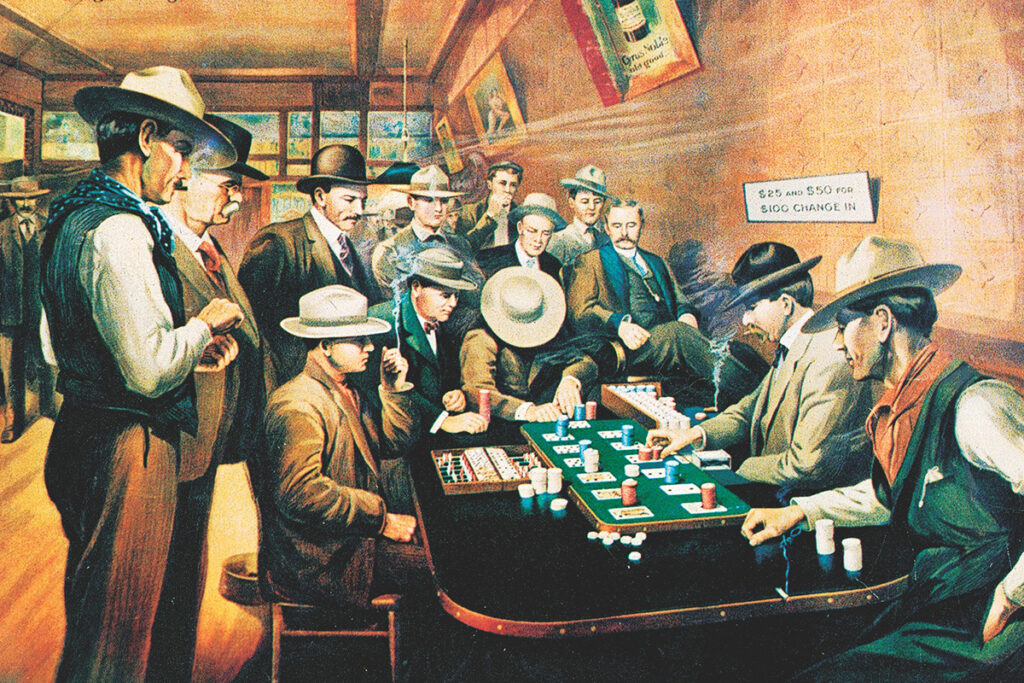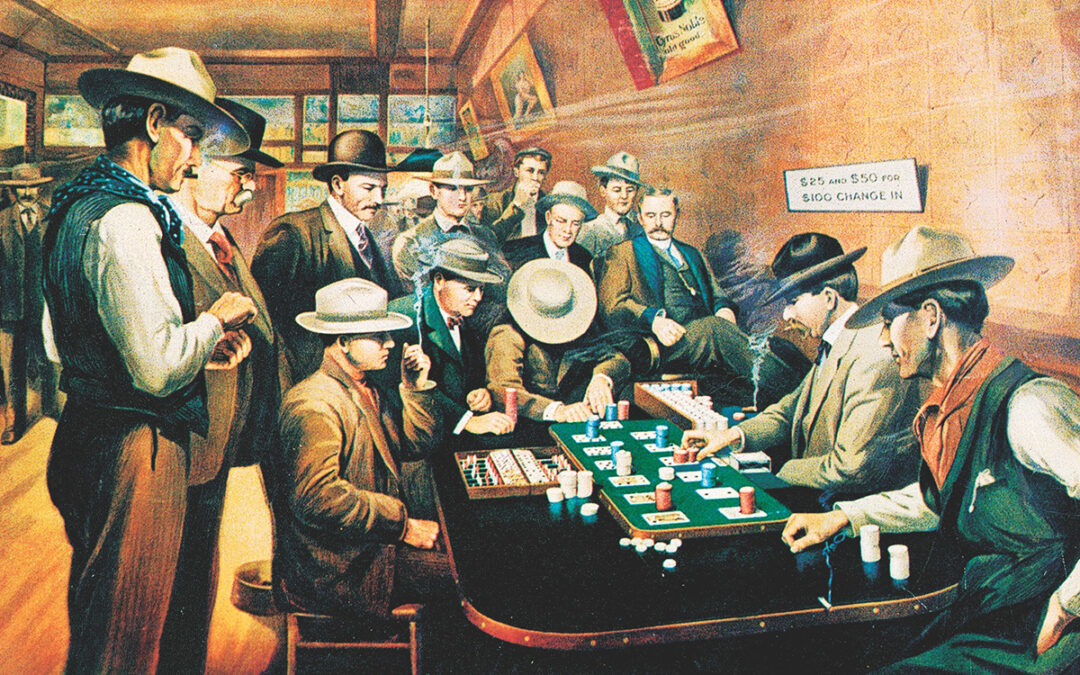
“How did 1880’s professional gamblers handle their money when they won big”? Bank it? Carry it? Bury it? We didn’t know.
First, let’s talk about professional gamblers as opposed to myths. Most western citizens considered gambling to be a respectable profession and those who chose to make a living doing it, were respected members of society. “Gambling was not only the principal and best paying industry of the town at the time, but it was also reckoned among its most respectable,” wrote Bat Masterson in 1907. Professional gamblers ran their own games by renting a table at a gambling house and banking it with their own money. Because of this, many professional gamblers settled in one place. In order to be successful as an established businessman, a gambler needed to cultivate a reputation for fairness and running a straight game. These men were known as ‘sports’. They did not drink, cheat, or swear. They paid rent and licensing fees, encouraged customers to run up bar tabs and did their best to act as, Historian Hubert Hoover Bancroft put it, “Reputable and respectable merchants.”
If it was a mining boom town like Tombstone the professional gambler would move on when the mines began to play out and the town went into decline.
The best place a professional gambler could bank his money was in the safe in the saloon where he rented a table. Other locations would be at a local bank however, his money wasn’t insured and could be lost in a bank robbery. He could hide it under his mattress but that wasn’t a secure hiding place.
The best book on the subject is Robert DeArment’s, Knights of the Green Cloth.






